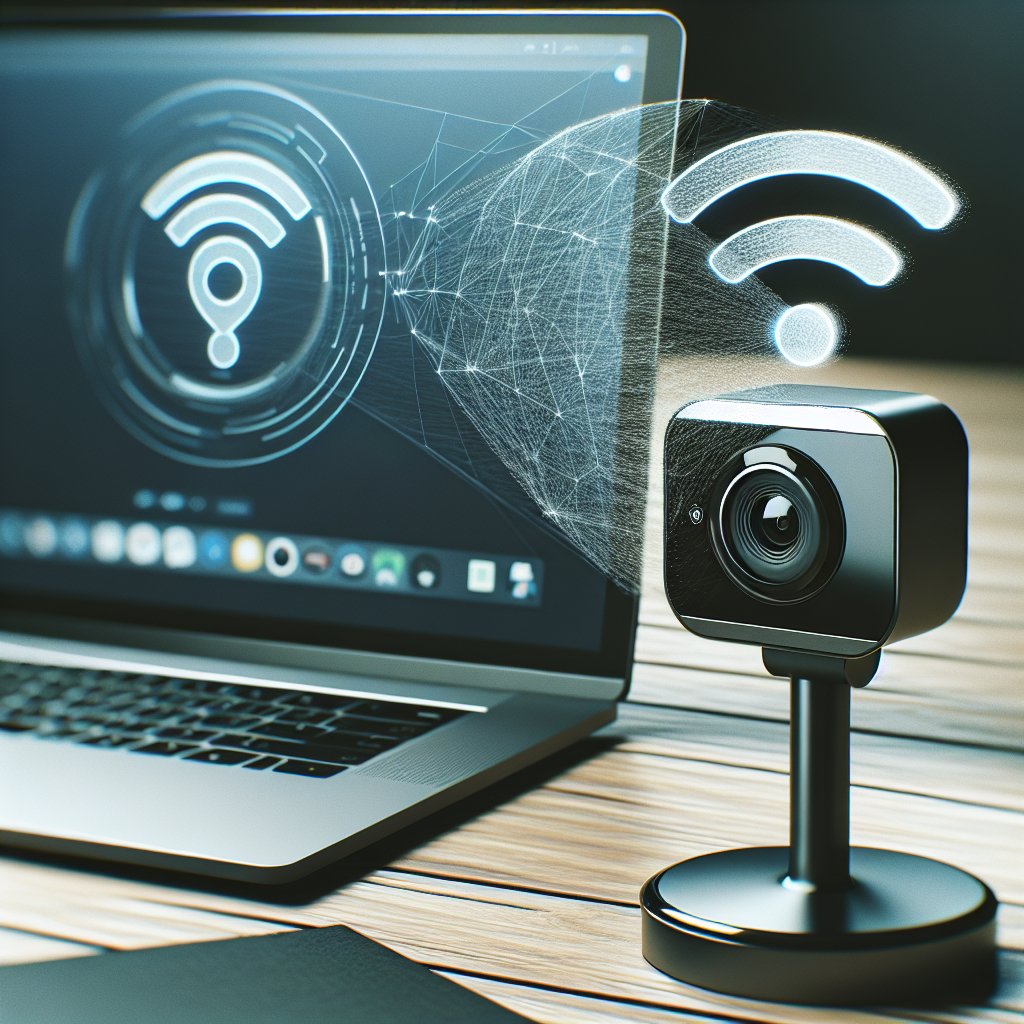Introduction
In the modern world, the need for seamless online communication has significantly risen. This has brought about the necessity for advanced video call setups, including connecting webcams wirelessly to computers. But is it truly possible to have a wireless webcam connection, and if so, what are the methods and benefits?
Understanding Wireless Webcam Connections
A wireless webcam can be connected to a computer using various technologies, such as Wi-Fi, Bluetooth, or other proprietary wireless tech. This flexibility allows users to set up their webcams without the need to deal with cumbersome cables, giving them the freedom to place the webcam anywhere within range. The primary methods for achieving this are:
- Wi-Fi Networks: Leveraging existing Wi-Fi networks to connect webcams.
- Bluetooth: Utilizing Bluetooth technology for short-range wireless connections.
- Wireless USB: Using wireless USB adapters designed specifically for webcams.
- Proprietary Solutions: Some webcam manufacturers offer exclusive wireless solutions.
Methods for Connecting a Webcam Wirelessly
The following methods are commonly used to connect a webcam wirelessly to a computer:
| Method | Description | Pros | Cons |
|---|---|---|---|
| Wi-Fi Networks | Uses home/office Wi-Fi to connect the webcam. | Long-range, typically higher quality. | Requires a stable internet connection. |
| Bluetooth | Uses Bluetooth technology for short-range connections. | Convenient for short distances, usually simpler. | Shorter range and potentially lower quality. |
| Wireless USB | Utilizes USB adapters to provide wireless connectivity. | Good compromise between ease and quality. | Still requires adapters, not purely wireless. |
| Proprietary Solutions | Specialized hardware/software from webcam manufacturers. | Potentially optimized for performance and stability. | Can be more expensive, less flexible. |
Using Wi-Fi to Connect a Webcam
Wi-Fi is one of the most popular methods to connect a webcam wirelessly:
- Setup: Many modern webcams come with built-in Wi-Fi capabilities. Ensure your webcam is Wi-Fi enabled and install any necessary software or apps provided by the manufacturer.
- Connection: Follow the manufacturer’s instructions to connect the webcam to the same Wi-Fi network as your computer.
- Usage: Once connected, you can use the webcam for various applications, including video conferencing, streaming, and security surveillance.
Using Bluetooth to Connect a Webcam
Bluetooth is another viable option, especially for short-range connections:
- Setup: Ensure your webcam supports Bluetooth. If it doesn’t, you’ll need a Bluetooth adapter.
- Connection: Pair the webcam with your computer via Bluetooth settings. Both devices must support the same Bluetooth profiles.
- Usage: Ideal for scenarios where the webcam is close to the computer, such as personal workspaces or single-room setups.
Using Wireless USB Adapters
Wireless USB adapters enable webcams to connect without direct cables:
- Setup: Purchase compatible wireless USB adapters for your webcam. Install any required drivers or software.
- Connection: Follow the provided instructions to establish a wireless USB connection between your webcam and computer.
- Usage: Adds flexibility and ease of use, although still involving some hardware.
Benefits of Wireless Webcam Connections
- Flexibility: Place your webcam anywhere within the range of your wireless network.
- Neat Setup: Avoid clutter from cables and potential tangling issues.
- Mobility: Move your webcam around without unplugging and replugging it.
- Scalability: Easily incorporate multiple webcams into your setup without additional wiring.
Disadvantages to Consider
- Latency: Wireless connections may introduce slight delays.
- Interference: Other wireless devices can cause interference, affecting performance.
- Security Concerns: Wireless connections can be more vulnerable to hacking if not properly secured.
Recommended Products for Wireless Webcam Connections
Here are a few highly recommended products for connecting webcams wirelessly:
- Logitech Brio Ultra HD Pro Webcam: A top-tier webcam offering 4K video and Wi-Fi capability.
- Microsoft LifeCam Studio: A versatile webcam with various connectivity options, including wireless USB adapters.
- Mevo Start Live Event Camera: An excellent choice for live streaming, offering reliable Wi-Fi connectivity.
- Wyze Cam Pan: Great for home security and monitoring, featuring easy Wi-Fi setup.
Conclusion
Connecting a webcam wirelessly to a computer is not only possible but also offers immense convenience and flexibility. By utilizing technologies like Wi-Fi, Bluetooth, and wireless USB adapters, users can enjoy a clutter-free and mobile webcam setup. However, it’s essential to consider the potential disadvantages, such as latency and security risks, and choose high-quality products to ensure a seamless experience.
Frequently Asked Questions (FAQs)
1. Can any webcam be made wireless?
Not all webcams are designed to be wireless. However, many modern webcams offer wireless options, or you can use accessories like wireless USB adapters for older models.
2. Is a wireless webcam connection secure?
Wireless connections are generally secure if proper encryption and security protocols, such as WPA2 for Wi-Fi, are used. It’s crucial to follow best practices for wireless security.
3. What is the best wireless technology for webcams?
The best wireless technology depends on your specific needs. Wi-Fi is excellent for long-range and high-quality connections, while Bluetooth is suitable for short distances and simplicity.
4. Are there any additional software requirements?
Most wireless webcams come with manufacturer-provided software to facilitate the connection. It’s important to install and regularly update this software for optimal performance.



